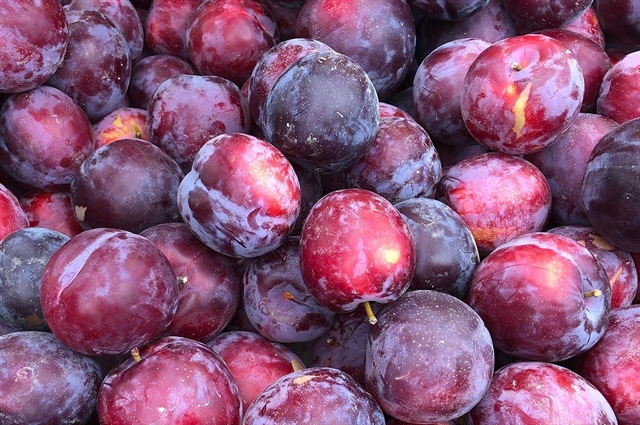 Economy
Economy

 |
| Australian plums will hit the Vietnamese market soon. — Photo vir.com.vn |
SYDNEY — Australian plums will soon be on shelves in Việt Nam under the two-way agricultural market access agreement that brings Australian plums to Việt Nam and sends Vietnamese passion fruit to Australia, according to the Australian Government.
Australia’s agriculture, fisheries and forestry exports to Việt Nam reached A$3.7 billion (US$2.5 billion) during 2023-24, with a growing trade in stone fruit to further solidify the relationship with the Southeast Asian country, Australia’s sixth largest export market.
The agreement supports the Vietnamese agricultural industry’s target of becoming a A$100-billion sector and the Australian horticultural sector’s A$20-billion goal by 2030.
Negotiations are also underway for the next pairing of Vietnamese pomelos and Australian blueberries.
Australian Minister for Agriculture, Fisheries and Forestry Julie Collins described the new market access as a significant milestone for the stone fruit industry and Việt Nam-Australia trade ties, saying accelerating mutual market access reflects the strong relationship between the two countries, serving as a driving force to capitalise on export opportunities.
The Australian government is focusing on opening doors for the sector and this is a positive step in achieving the goal, providing another key market for trade diversification, she added.
Meanwhile, Australian Minister for Trade and Tourism Senator Don Farrell affirmed that bolstering Australia’s trade with Southeast Asia, including Việt Nam, is a top priority of the Australian government, stating stronger trade with Vietnam means more jobs, and better wages for workers in the horticulture industry.
Passion fruit has become the fifth fruit of Việt Nam to be officially exported to Australia, following mango, longan, lychee and dragon fruit. Currently, the fruit is available in over 60 countries and territories. —VNS




